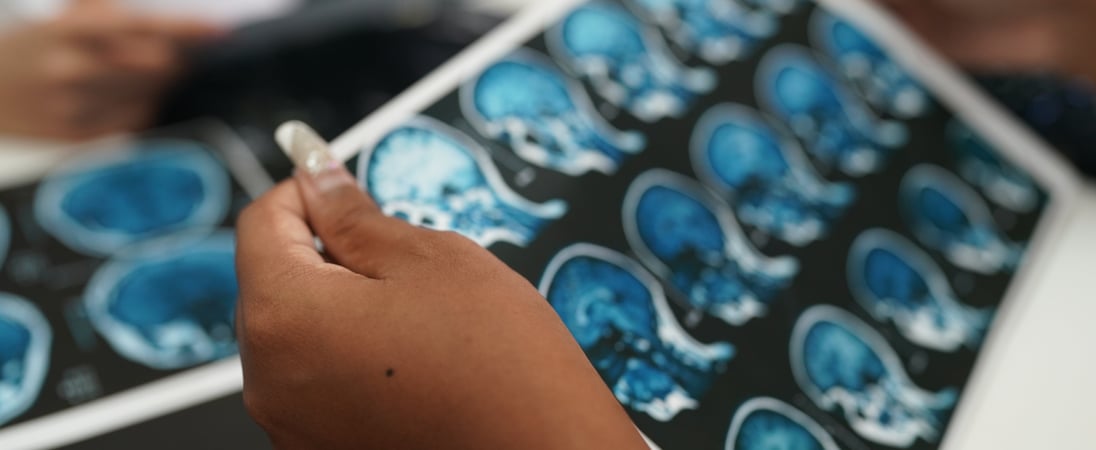
National Brain Injury Awareness Month
National Brain Injury Awareness Month focuses on the millions affected by brain injuries, whether from accidents, falls, sports, or other causes. It goes beyond statistics to emphasize the unique experiences of individuals dealing with conditions ranging from mild concussions to severe brain trauma.
How to Observe National Brain Injury Awareness Month
Brain Injury Awareness Month is the perfect time to get involved, learn more, and spread the word. Here are some engaging ways for anyone to contribute to the cause. Take a look at a few of these ideas for celebrating.
Share Personal Stories
Encourage brain injury survivors or their families to share their experiences. Stories can inspire and inform others while helping to break down misunderstandings.
Writing a blog post, recording a video, or posting on social media can reach many people. Each story helps paint a fuller picture of what living with a brain injury means.
Host a Community Event
Organizing a small event in the local area can raise awareness. This could be anything from a health talk, a charity run, or even a community art show where participants express how brain injuries affect their lives. Getting people together for a good cause can spark conversation and motivate others to learn more.
Wear the Color Blue
Wearing blue shows support for brain injury awareness. It can start conversations and encourage others to join in. To spread the message, try organizing a “blue day” at school, work, or online. Adding some blue-themed decorations to your space can also create a visual reminder of the cause.
Share Facts and Resources
Use social media to post facts about brain injuries and where to find help. Facts can highlight the different types of brain injuries, their symptoms, and prevention tips. Linking to reliable resources gives people the tools they need to understand more or find support.
Support a Fundraiser
Get involved with local or national fundraisers supporting brain injury organizations. Joining a charity event or donating to a research foundation helps push for better treatment and support options. Even sharing information about a fundraiser can contribute to spreading awareness and gathering support.
History of National Brain Injury Awareness Month
Brain Injury Awareness Month began in 1984 when the Brain Injury Association of America (BIAA) launched an effort to bring attention to brain injuries. The organization, founded by families of brain injury survivors, saw a need for more public understanding.
They wanted to share information on prevention, treatment, and the lasting effects of brain injuries. Their goal was to provide support to survivors and families while pushing for better care and resources.
Each year, March became a time to highlight these issues across the country. The movement quickly grew, with more organizations joining the cause.
Awareness campaigns aimed to educate communities about the different types of brain injuries and their impact. Over time, the month-long observance included activities like community events, educational programs, and advocacy efforts.
Each story is different, highlighting how survivors navigate physical, emotional, and cognitive challenges. This awareness month encourages a deeper understanding of the unpredictable nature of these injuries and aims to break down misconceptions while promoting compassion and empathy in the wider community.
The month also focuses on education and prevention, sharing vital information about brain health and strategies to reduce risks.
The 2024 campaign, “My Brain Injury Journey,” invites survivors and their families to share personal stories, helping others recognize the struggles and triumphs that come with such injuries. Raising awareness helps ensure better access to care, support, and resources.
The annual theme has shifted focus over the years to address different aspects of brain injuries. Recent themes have highlighted personal stories, prevention strategies, and the need for improved healthcare. The awareness month emphasizes that no two brain injuries are alike.
It recognizes the unique experiences of each survivor, stressing the need for individualized support and understanding.
Supporters and advocates continue to use March to push for better laws and resources. The month also provides a platform to share stories and raise funds for research. By engaging more people, Brain Injury Awareness Month aims to make a lasting difference for those affected.
See what else is happening…
There’s always more going on every month at Days Of The Year. Here are our favorites this month!
Also in ...
View all holidaysNational Barista Day
They create magic in a cup, transforming simple beans into a delicious pick-me-up. From latte art to custom blends, they're the coffee wizards!
Share a Smile Day
Spreading happiness with a simple, friendly expression, lighting up someone's day with warmth and positivity.
National Minnesota Day
A land of lakes, forests, and vibrant cities, offering outdoor adventures, cultural delights, and a friendly spirit that's uniquely its own.
We think you may also like...
Blue Monday
Beat the bleak, post-festive slump by setting (or resetting) resolutions, getting some exercise in the fresh air or watching an uplifting movie.
National CBD Day
Harnessing nature's botanical wonders, CBD offers holistic relief, promoting wellness and vitality through its natural properties.








